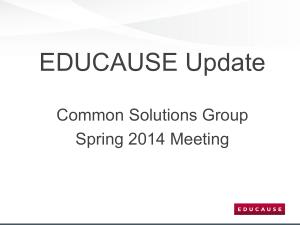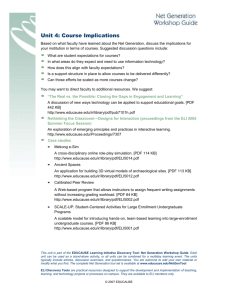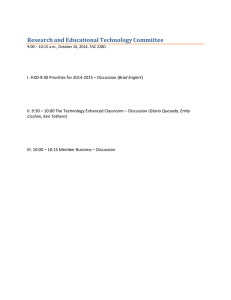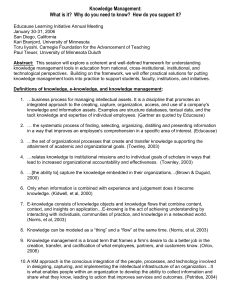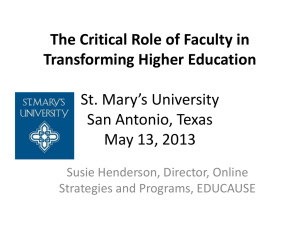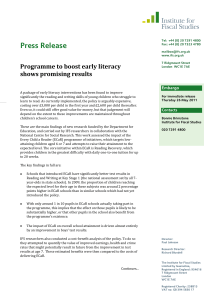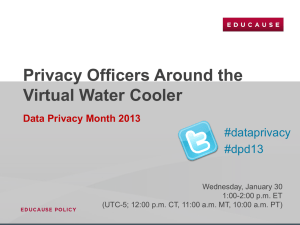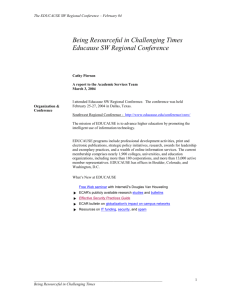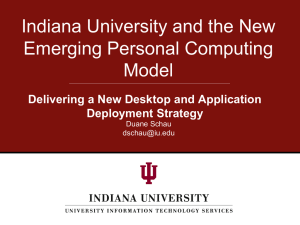2013 - EDUCAUSE.edu
advertisement
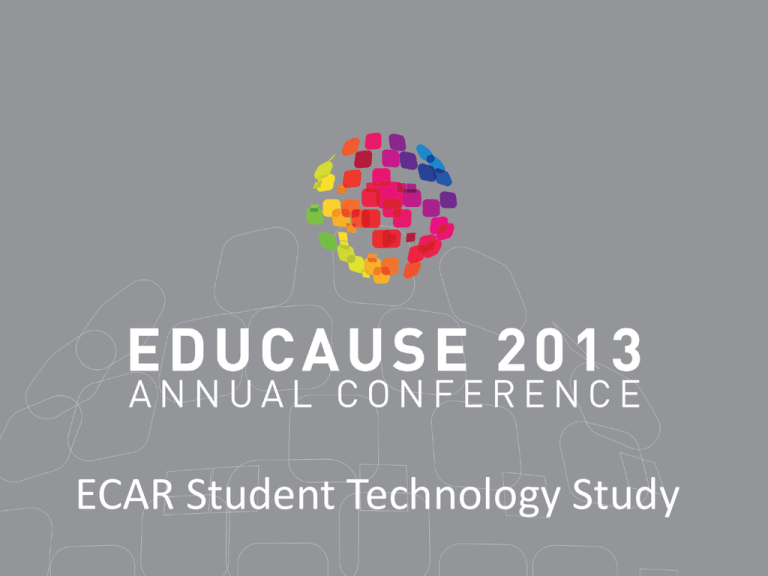
ECAR Student Technology Study
Report Authors
Charles Dziuban,
University of Central Florida
Director, Research Initiative for Teaching Effectiveness
@DataDeeva
Eden Dahlstrom,
EDUCAUSE
Director of Research
@morganmundum
Glenda Morgan,
University of Illinois at Urbana-Champaign
Director of Academic Tech Services & eLearning Strategist
J.D. Walker
University of Minnesota
Research Associate
What Is the “Student Study?”
ECAR
Institutions
Conceptualizes
Volunteer
Operationalizes
Implement
Invites
Remind
Facilitates
Utilize
Returns
Analyzes
Reports
An annual ECAR study of undergraduate
students’ experiences with and
expectations about technology
Methodology
251 institutions; 113,035 undergraduate responses
Voluntary survey, opportunistic sample
$50 and $100 survey incentives (~1 in 2,000 chance of
“winning”)
Sample of ~10,000 U.S.-based respondents
Stratified, random sample to proportionally match
undergraduate demographics per IPEDS
1% margin of error
All non-U.S.-based responses included in report where
noted
Methodology: Response Counts
*Data from one institution were excluded from the final analysis, yielding 112,585 valid responses for the full 2013 data set
Student Study
Project
Overview
Resource Hub www.educause.edu/student-study
Research Products
Study Evolution
2007
2008
2009
2010
2011
2012
2013
Study Evolution
2007
2009
2011
2013
Technology
Students
Students Technology
Courses
Technology
Technology
Courses
Students
Institutions
Information
Students
Institutions
Handheld
College
Learning
Learning
Internet
Instructors
Institutions
Study Evolution for 2014
+
{ student voices }
=
{ faculty voices } { better institutional perspective}
Why Is This Work Important?
The “What”…
ECAR uniquely captures
the student voice (and will
capture the faculty voice)
about technology
experiences and
expectations.
&
…the “So What”
Key Findings
2013 THEMES
Technology Value and Use
Technology Value and Use
Students value the ways in
which technology helps
them achieve their
academic goals and
prepares them for their
future academic and
workplace activities.
Technology Value and Use
Basic technology
resources, such as
the institution's
website and the
CMS, are the most
pervasive and most
valued.
Technology Value and Use
Freely available course content/open educational
resources, e-books, simulations and education games, and
e-portfolios are still in the experimental stages for students.
Technology Value and Use
The “What”…
Students’ relationship with
technology is complex.
They recognize its value
but still need guidance
when it comes to using it
for academics.
&
…the “So What”
Learning Environments
Learning Environments
Although not fully
mainstream…
…blended learning persists as
the preferred modality.
…however, few
undergraduates have
taken a MOOC.
Learning Environments
More students are taking onlineonly courses…
0%
20%
AA
3%
BA Pub
3%
BA Priv
3%
MA Pub
2%
MA Priv
3%
DR Pub
4%
DR Priv
4%
All U.S.
3%
Canada
4%
Other Countries
6%
40%
60%
80%
100%
Learning Environments
The “What”…
Students prefer blended
learning environments
while beginning to
experiment with MOOCs.
&
…the “So What”
Mobile Device Ownership and Use
Mobile Device Ownership and Use
Undergraduates own two to three
Internet-capable devices, and
ownership of smartphones and
tablets in particular jumped the most
from 2012 to 2013.
Mobile Device Ownership and Use
Product market share remains diverse
for undergraduates.
Mobile Device Ownership and Use
Ten challenges for using
smartphones as learning tools.
1) 34% slow network
2) 34% inadequate battery
3) 32% device usability issues
4) 31% cost of data service
5) 29% limited network access
6) 25% cost of device
7) 20% lack of apps
8) 18% cost of apps
9) 12% security/privacy concern
10) 4% health concern
STUDENTS’
IN-CLASS
BYOD
EXPERIENCE
Mobile Device Ownership and Use
Mobile device
access to
institutionally
provided services,
applications, and
websites is up,
though
performance
ratings are waning
a bit compared
with 2012.
Mobile Device Ownership and Use
The “What”…
Students are ready to use
their mobile devices more
for academics, and they
look to institutions and
instructors for
opportunities and
encouragement to do so.
&
…the “So What”
Connectivity and Engagement
Connectivity and Engagement
Technology makes the connected age possible, but
using technology to help students feel more engaged in
their classes (or campus life) and connected with others
can be challenging.
Connectivity and Engagement
Students prefer to keep
their social and academic
lives separate, and they
maintain those boundaries
in their use of technology.
Connectivity and Engagement
Students are only moderately
interested in early-alert learner
analytics and guidance about
course offerings.
e.g., Netflix or Amazon.com “you
may also like” or “we recommend”
e.g., tutoring, skills-building
opportunities, etc.
Connectivity and Engagement
The “What”…
Students value their
privacy, and using
technology to connect
with them has its limits.
&
…the “So What”
Q&A
Learn More
Participation Website:
http://www.educause.edu/student-study
E-Mail:
study@educause.edu
Twitter updates from Eden:
@DataDeeva
E-Live at 10 AM Pacific Time 11/12
http://www.educause.edu/conferencesevents/online-events/educause-livewebinars
Thank You, Participants! (p. 1 of 4)
Thank You, Participants! (p. 2 of 4)
Thank You, Participants! (p. 3 of 4)
Thank You, Participants! (p. 4 of 4)
